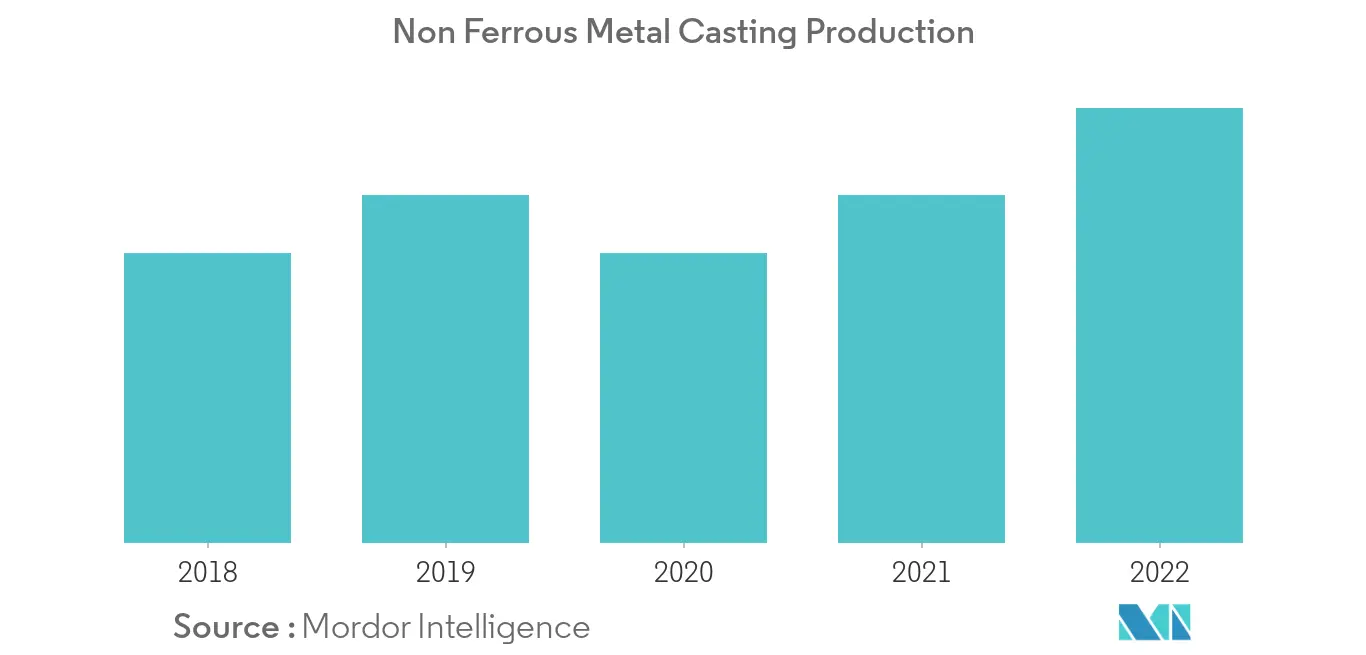Market Trends of South Africa Automotive Parts Aluminium Die Casting Industry
Vacuum Die Casting Segment is Expected to Witness the Fastest Growth Rate
The vacuum die casting segment of the market studied is expected to witness a CAGR of nearly 8% during the forecast period.
There have been significant developments and improvements in the conventional die casting process. Currently, the ultra-high-vacuum die casting process is applied for producing large and thin component parts, such as space-frames and pillars, which are usually welded to automobile chassis.
Electrical and hydraulic components in an automobile work simultaneously. Reliability and quality are given prime importance in transmission parts. The transmission system in an automobile is a complex combination of mechanical functions. It is prone to extreme conditions and environments. This enhances the importance of integrity. Valve bodies, stators, and clutch pistons are some of the commonly die casted transmission parts in the automotive industry.
Ultra-vacuum die casting produces better weldable automotive products than most other die casting processes. However, products produced through this process are large and require huge-sized die casting machine, like 2,500-4,000 metric ton of die clamping force. This impacts the popularity of the ultra-high-vacuum die casting process among OEMs and large die casters.
However, the vacuum die casting production process eliminates air from the mold and allows the front of molten metal to merge freely without forming any shuts or pores, which is a major issue in pressure die casting process.
A sudden shift from pressure die casting to vacuum may not be possible, due to the higher productivity and ease of manufacturing automotive die casting parts, which employ the pressure die casting method. However, this change is gradual, and it expected to continue to increase during the forecast period.

South Africa Automotive Parts Aluminum Die Casting Market is Expected to Witness the Fastest Growth Rate than Before
In Africa, South Africa is one the major market player in 2019, in competition with Germany and Italy. In 2019, the African region registered more than 47,000 metal casting plants. The South African automotive industry accounted for over 25% of the total demand for castings in the country. The country's economy is growing, and the disposable income of middle-class consumers is also increasing. This, in turn, reflects positively on the growing demand for vehicles. Over the past five years, owing to the low production costs in the country, the demand for vehicle production went up drastically. Passenger car sales in 2019 witnessed a 4% decline, However, with several initiatives taken by the country to boost the automotive industry, passenger car sales are expected to increase over the forecast period, which, in turn, is expected to drive the demand for aluminum die castings in the country. With the rise in demand for electric vehicles in the country, the demand for aluminum die-casted parts is expected to increase in the coming years.



